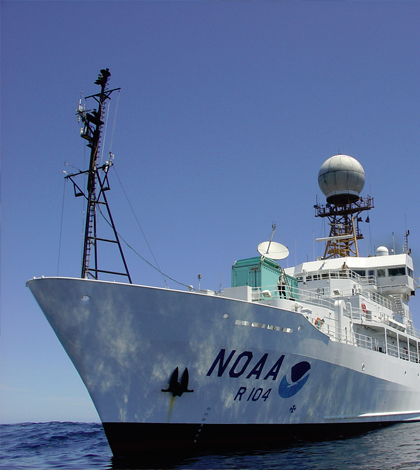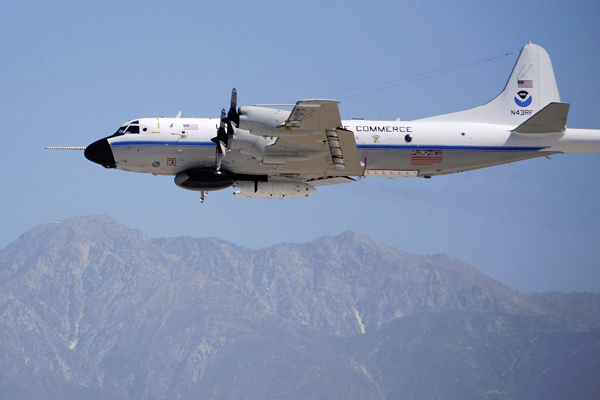CalWater 2015 campaign charts aerosols’ impacts on California’s atmospheric rivers

Atmospheric rivers are long bands of moisture that run through the atmosphere alongside extratropical storms. They form as winds draw together bands of moisture into narrow regions typically ahead of cold fronts and can stretch thousands of miles. These giant atmospheric trains of moisture provide the state of California with up to 50 percent of its water annually, and each one is capable of transporting 10- to 20-times the flow of the Mississippi River.
The current severe drought in California has burgeoned from a dearth of atmospheric rivers, according to scientists at the Scripps Institution of Oceanography. But there is much still unknown about the ins and outs of these giant weather systems. And despite knowing that California’s current drought is linked to a drop, it’s hard to say that fewer atmospheric rivers is the outright cause. Perhaps a better question is: What’s causing fewer atmospheric rivers near the Golden State?
Researchers at NASA, the National Oceanic and Atmospheric Administration, Scripps and the U.S. Department of Energy are curious to find out what’s going on with atmospheric rivers near California and are starting by looking at the roles aerosols play in the amount of precipitation the rivers generate. They’re joining up for CalWater 2015, a field campaign placing four research aircraft in the sky to study the systems, ground-based instrumentation across parts of California, and a research vessel in ocean areas below the storms.

Researchers will fly through atmospheric rivers using NOAA “hurricane hunter” aircraft to study the effects of aerosols on precipitation. (Credit: National Oceanic and Atmospheric Administration)
“Our role is to understand whether the aerosols that get into the clouds that make atmospheric rivers can affect the amount of water that falls,” said Kimberly Prather, distinguished chair in atmospheric chemistry at the University of California, San Diego, which houses Scripps. “Including aerosols and their impacts on the precipitation process will help improve the ability of weather forecast models on how, when, where and how much snow or rain will occur.”
Prather took part in the first CalWater campaign in 2009 that yielded new findings on specific cloud-seeding aerosols that affect precipitation patterns in the Sierra Nevada mountain range. During that campaign, researchers found that locally produced aerosols from air pollution tended to result in less precipitation. Aerosols from elsewhere, like desert dust floating over from Africa or biological particles sloshing up from the ocean, tended to bring about more precipitation. She hopes to make those same discoveries during this effort.
“We are sampling the aerosols that seed clouds to understand how things like dust, sea spray and pollution impact precipitation,” said Prather. “Some types of aerosols can suppress precipitation while others can enhance it. Scientists know very little about how different sources influence clouds and precipitation processes.”
The campaign got underway in January 2015 with research flights taking off from McClellan Airfield in Sacramento. Many of the ground-based instruments are stationed in Bodega Bay, while additional ground data are being collected by other small-scale monitoring packages around the state. The research vessel is the NOAA Ship Ronald H. Brown. It will take measures of the wind, air pressure and temperature inside atmospheric rivers while sailing from Hawaii to California.
Top image: NOAA Ship Ronald H. Brown will assist scientists in the CalWater 2015 campaign to study atmospheric rivers. (Credit: National Oceanic and Atmospheric Administration)





0 comments